
5 things to know about Winnipeg’s big sewage problem
115 billion litres, 70 years to fix, $5.5 billion in lawsuits
In a small greenhouse behind the Piikani First Nation school grounds in southern Alberta, the wind has ripped pieces off the plastic walls and roof. Across fields of shifting green, yellow and brown, countless wind turbines continue their endless, calm spins.
Wind, in this pocket of the province, is constant. It’s what’s changing, however, that most concerns the Piikani.
The Saskatoon berries, a staple, dried up quickly this year as heat pummelled southern Alberta. The willow trees the nation planted down by the river have struggled to get a foothold. Sweetgrass, picky about where and how it grows — not too wet, definitely not too dry — is getting harder to find as wetlands disappear.
Droughts, fires and floods all threaten the nation. All of those threats are growing more severe due to climate change, according to a recent report from Natural Resources Canada, as temperatures rise, soil dries and rain, when it comes, often comes in torrents.
So, on a morning in early September, the first hints of fall upon the wind, a group of scientists visited the nation for a ceremony. Sheltered inside a teepee not far from the little school greenhouse, Elders intoned a blessing and bestowed three braided lengths of sweetgrass to the visitors. Curls of smoke from lit strands of the grass rose from the plain wooden box at their feet.
The ceremonial transfer of the sweetgrass was a coming together of western science and the Traditional Knowledge of the Piikani, an invitation for the scientists to look at the important ceremonial plant and determine its ability to sequester carbon.
The transfer is part of a larger process for the nation in partnership with The Resilience Institute — a Canmore-based organization that looks at long-term, multidisciplinary approaches to climate change challenges.
The suite of programs look at a changing climate and how Piikani traditions can both survive in the face of disaster and help contribute to reducing the worst of the impacts — to plant more sweetgrass for ceremony and heal the planet at the same time, to teach youth about culture and chart a path forward. To grow food on reserve to weather the whims of a changing world.
“This symbol of sweetgrass, it’s not about the history, it’s about what we’re going to do today,” says Peter Strikes With A Gun, an Elder presiding over the transfer. “We could have an earthquake, and everybody will be running, but if a person is ready, I’m ready. That’s what preparation means, that you’re ready for the tests we’re gonna go through.”
The Piikani Nation, part of the Blackfoot Confederacy, is nestled into the foothills of southwest Alberta, down the highway from the old coal boomtowns of the Crowsnest Pass and hemmed in on all sides by wind turbines. The peaks of the Rockies to the west are just visible above the shifting hues of the late summer prairie.
Its traditional territory stretches much further, to those mountains in the west, across the U.S. border to the Yellowstone River in the south, north to the North Saskatchewan River and east into Saskatchewan and the North Dakota border with Montana.
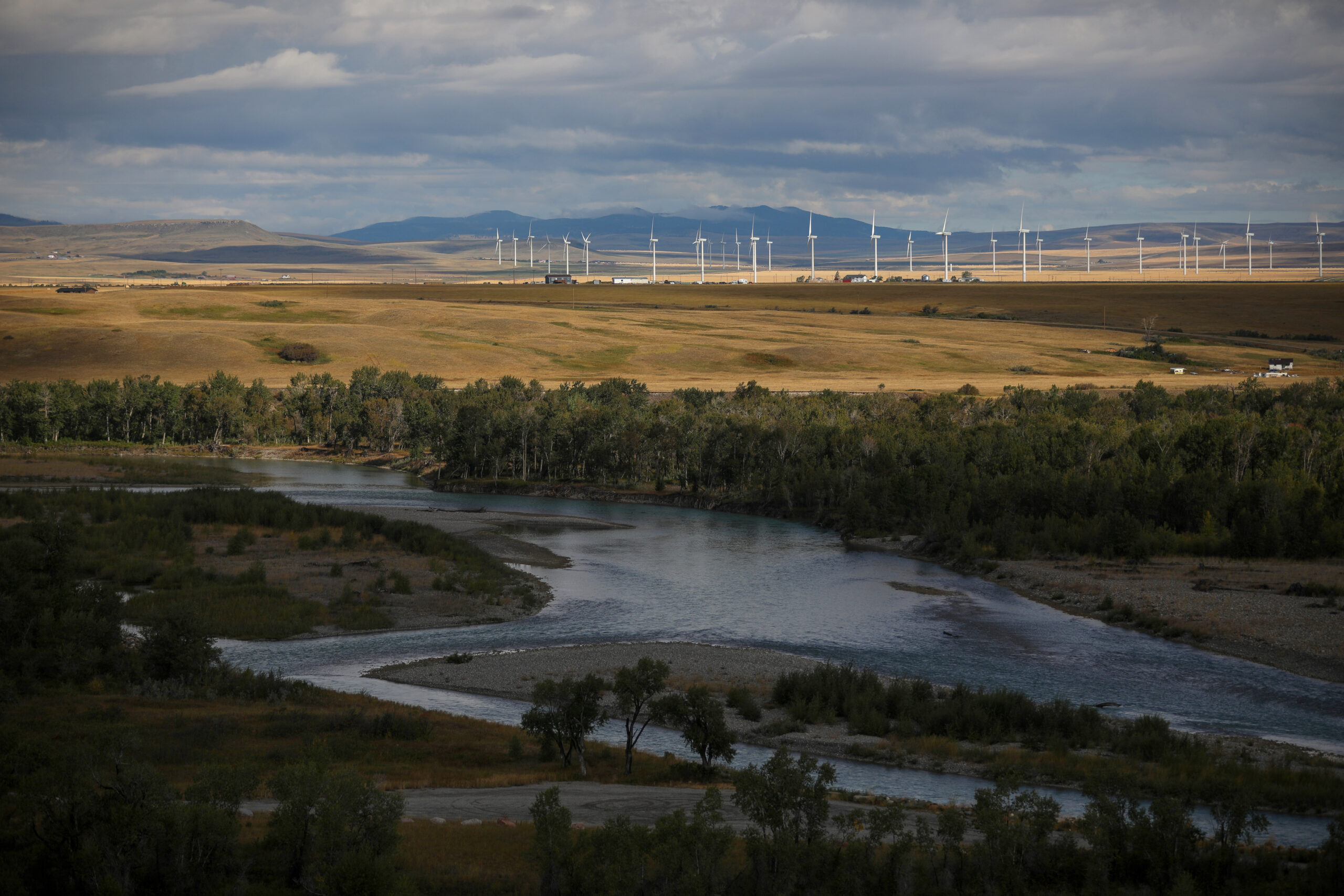
The reserve, home to approximately 2,500 of the 4,200 registered Piikani, sits on high ground, across the highway from a valley that drops steeply down to the Oldman River, a once wild flow staunched by a nearby dam in the mid-’90s.
The area has seen thick smoke from wildfires in recents years, as well as flooding and droughts. This summer was hot and dry.
Before colonization, the Piikani depended on the once-massive bison herds of the plains for everything from food to shelter, clothing and more, but those herds were wiped out by settlers and the Piikani were forced to move onto reserve land following the signing of Treaty 7. The nation now imports almost all of its food.
The partnership with The Resilience Institute started in 2019, when Noreen Plain Eagle, the manager of the Piikani lands department, and Laura Lynes, the president of the institute, were introduced following a previous collaboration with the nearby Kainai Nation.
There were conversations with Plain Eagle and with people in the community to get a sense of what they needed and eventually a meeting with chief and council, during which they passed a resolution that solidified the institute as a partner going forward on all things climate change.
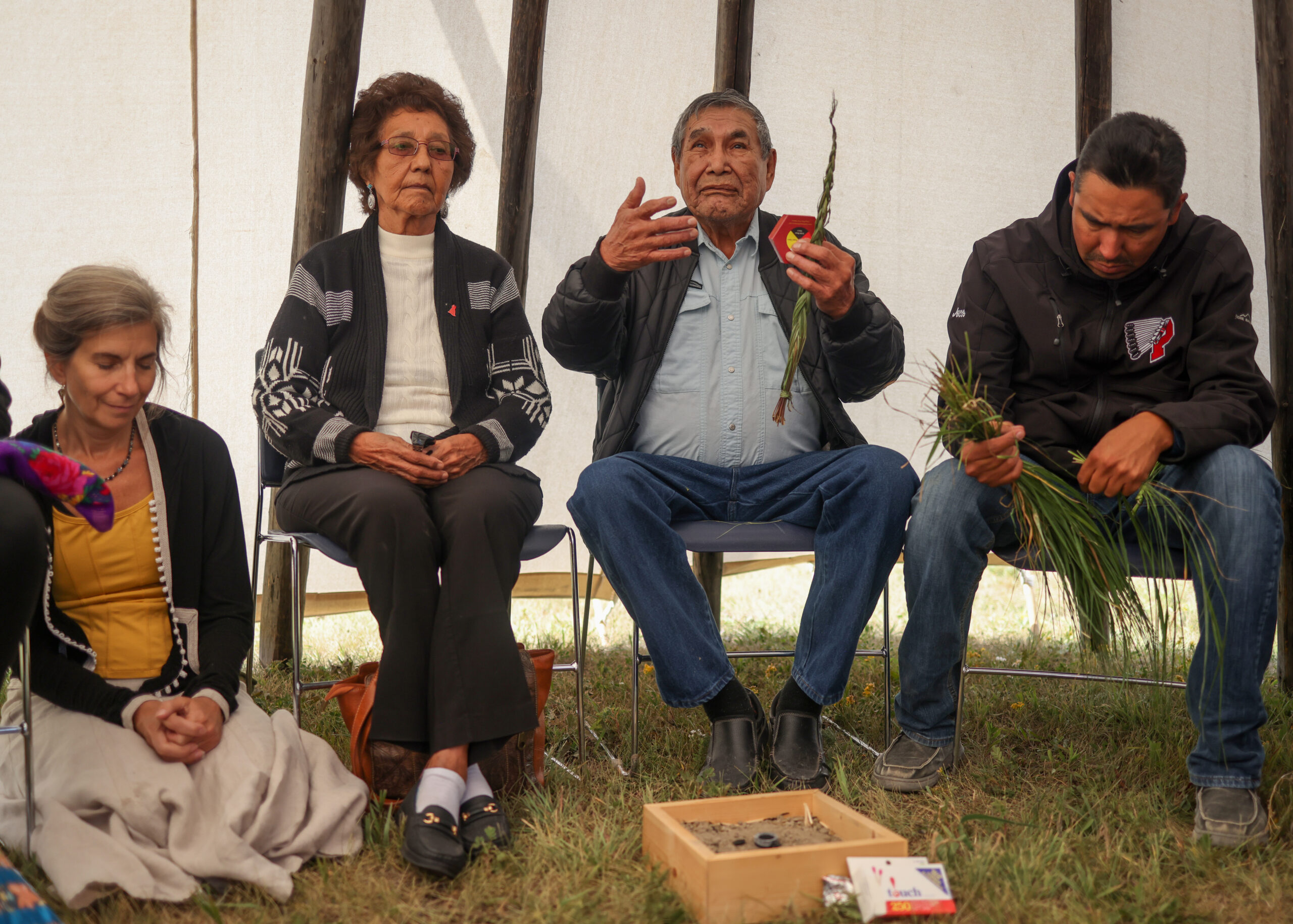
More conversations followed.
“It’s actually one of our programs called LEAP — local early action planning — and during that process, we better understand the community’s perceptions of risks, their ideas for what kind of innovative responses to those risks, culturally or locally, that they want to bring to the table, and then we bring ideas to the table and from that we develop a plan going forward,” Lynes says.
One thing that became clear was the community wanted to involve the youth.
Then came the pandemic, and the food delivery trucks stopped coming.
“When COVID hit, we saw how we’re the last of the food chain, you know, because we’re in some ways in an isolated corner of the world,” Plain Eagle says. “When COVID hit, we were looking for vegetables.”
It brought the precarious state of the nation’s food supply into stark relief.
“The community decided they wanted to really focus on food sovereignty and security so this would never ever happen again, for any reasons if they got cut off,” Lynes says.
The school was brought on board along with the lands department to look at the nexus of climate change adaptation and food security — how food fits with all of the nation’s challenges, from floods to fires to drought.
The little wind-battered greenhouse behind the school was there before the nation and the institute came together to think about climate and resilience, but it still represents a beginning.
Inside there’s not much growing — just a small plot of sweetgrass in the corner, started by teacher Brett Weighill with the help of his students. Some tomatoes fared okay this year, but the greenhouse isn’t sealed, so it only extends the growing season so long.
“The kids helped set this all up — planting them, watering them and everything — and then we participate in a number of workshops with the lands department, where our kids go out on the land, learn to identify the different plants, learn how to harvest seeds, bring them in, propagate them, get them started and then return them to the land in a higher abundance,” Weighill says.
“So that’s kind of the goal here.”
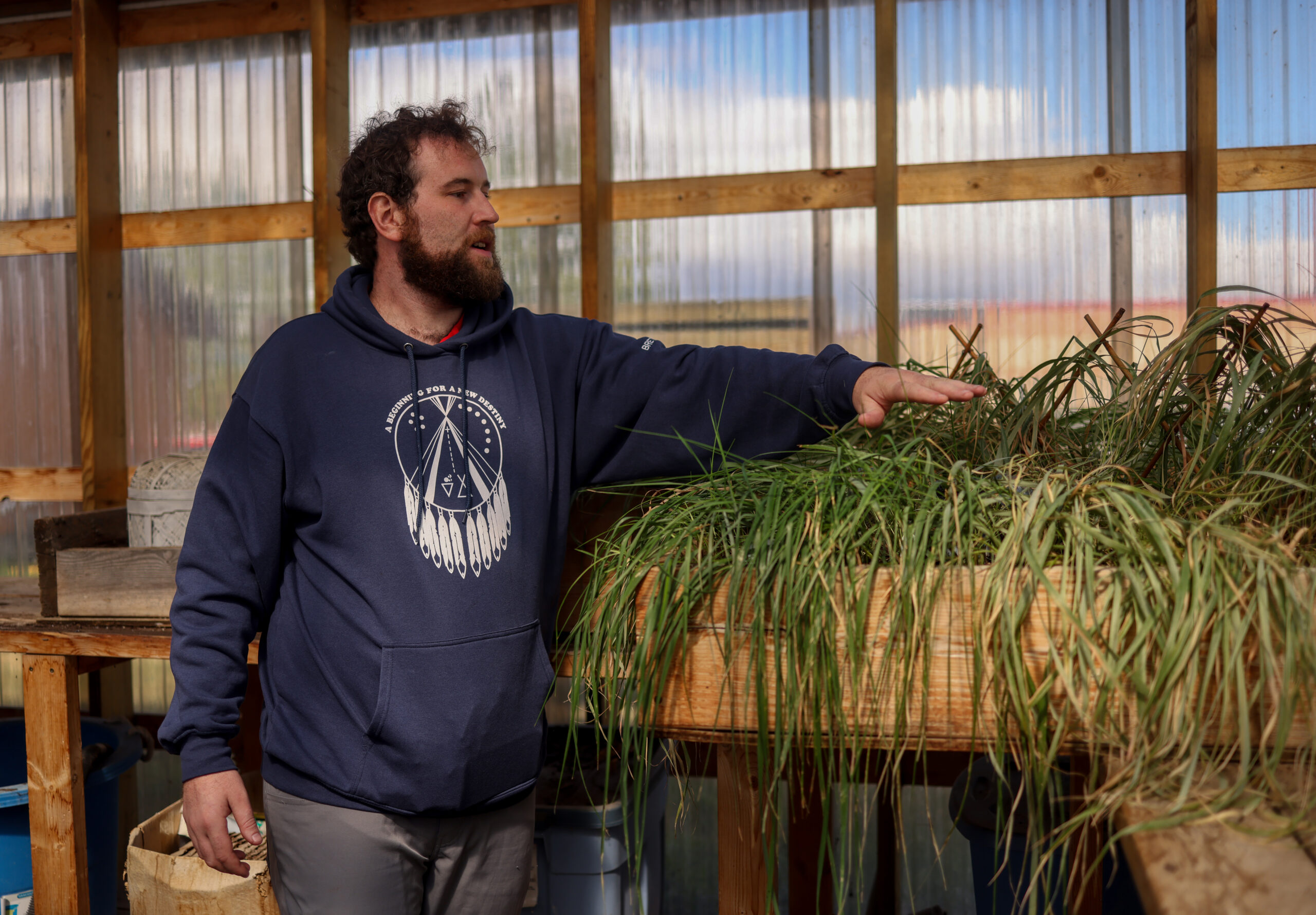
Across a field from the greenhouse, next to the teepee that hosted the transfer ceremony, a shelter belt has been planted with raspberries, saskatoon berries, chokecherries and rhubarb. The trees, once grown, can also provide traditional food from the pulpy layer just inside their bark.
The kids can pick from the shelter belt and learn to identify plants without having to travel, or struggle in fields, trying to find plants in a time of drought.
It’s all part of the larger process to introduce the youth to traditional plants and the process of growing their own food, bringing science and culture together, with an emphasis on using the Blackfoot language to describe the world around them.
Next, the nation is gearing up for construction of a hydroponic farm that will supply fresh food to the school and the community, a direct response to the risks of importing so much of what’s needed. If all goes well, it will connect to a new greenhouse.
Plants grown in the greenhouse could be used to seed — and heal — the land.
The scientists who will study sweetgrass will look not only at the carbon capturing capabilities of the plants, but also compare the wild plants and those in the current greenhouse to see if there are variations caused by the different growing conditions.
“The other thing we’re really looking at as part of this project is the interaction between the plants and the soil, the soil and microorganisms, the plants and the microorganisms. So this kind of three-way interaction between soil, microorganisms and the plants — how they feed each other, how they benefit each other,” says Wade Abbott, a scientist with Agriculture and Agri-Food Canada, which is partnering on the project.
“And by comparing them in different settings, you start to really get a picture of okay, what’s the important interaction here? How is this affected by climate, for example?”
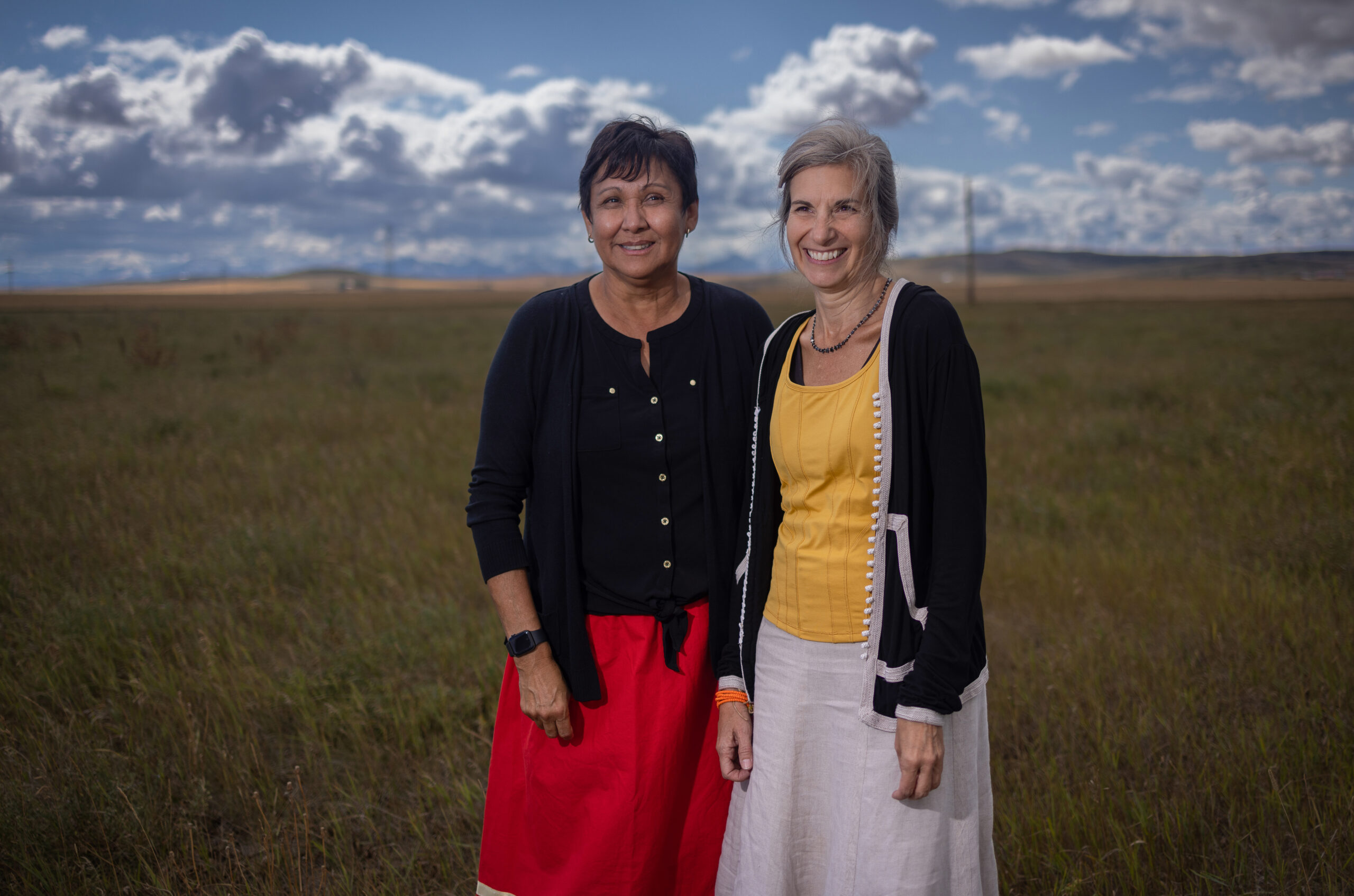
Weighill talks about water storage and crop cover, of using western knowledge to complement the already clear understanding of how important the plant is to the Piikani people.
“We need to incorporate Blackfoot medicines and traditional native plants to this area, especially the ones that are disappearing at a rapid rate due to water loss and a changing climate, and repopulate those not only for the people to use, but also the health of the environment,” Weighill says.
The nation is not alone in confronting the challenges of climate change and its impact on traditional ways of life and understanding. Nor is it alone in worrying about food security in a changing world — from research into berry harvesting in permafrost to innovative ways of growing more food locally in southeast Saskatchewan.
The nearby Kainai Nation, also a part of the Blackfoot Confederacy, is also looking at establishing a greenhouse while focusing on healing the native prairies grasses — one of the most endangered ecosystems on the planet.
Metis and First Nations across Canada are establishing Indigenous Protected and Conserved Areas and taking stock of the risks they face, particularly from flooding, to prepare for what’s to come.
There is increasing recognition that Traditional Knowledge gained from generations living with the land are important for informing how Canadians as a whole can adapt to a new climate.
Climate change impacts are too “wicked” to confine to any one knowledge system, Lynes says.
“So what we’re trying to do is create tangible opportunities for the best possible knowledge, whether it is from a Western science perspective, or from other perspectives, in this case Blackfoot ways of knowing, to be able to work together on solutions to problems,” she says.
On the day of the sweetgrass ceremony, the ground is wet from a night of rain, a welcome drink for land parched by a long, hot summer. The clouds have formed a wide circle around the nation, promising sun and some warmth before they will once again close in. The promise is kept for most of the day.
Inside the teepee, the winds are kept at bay and warmth is trapped as the group crams into the small space. Some sit on chairs arranged along the perimeter, others soak up moisture into pants and skirts from the ground.
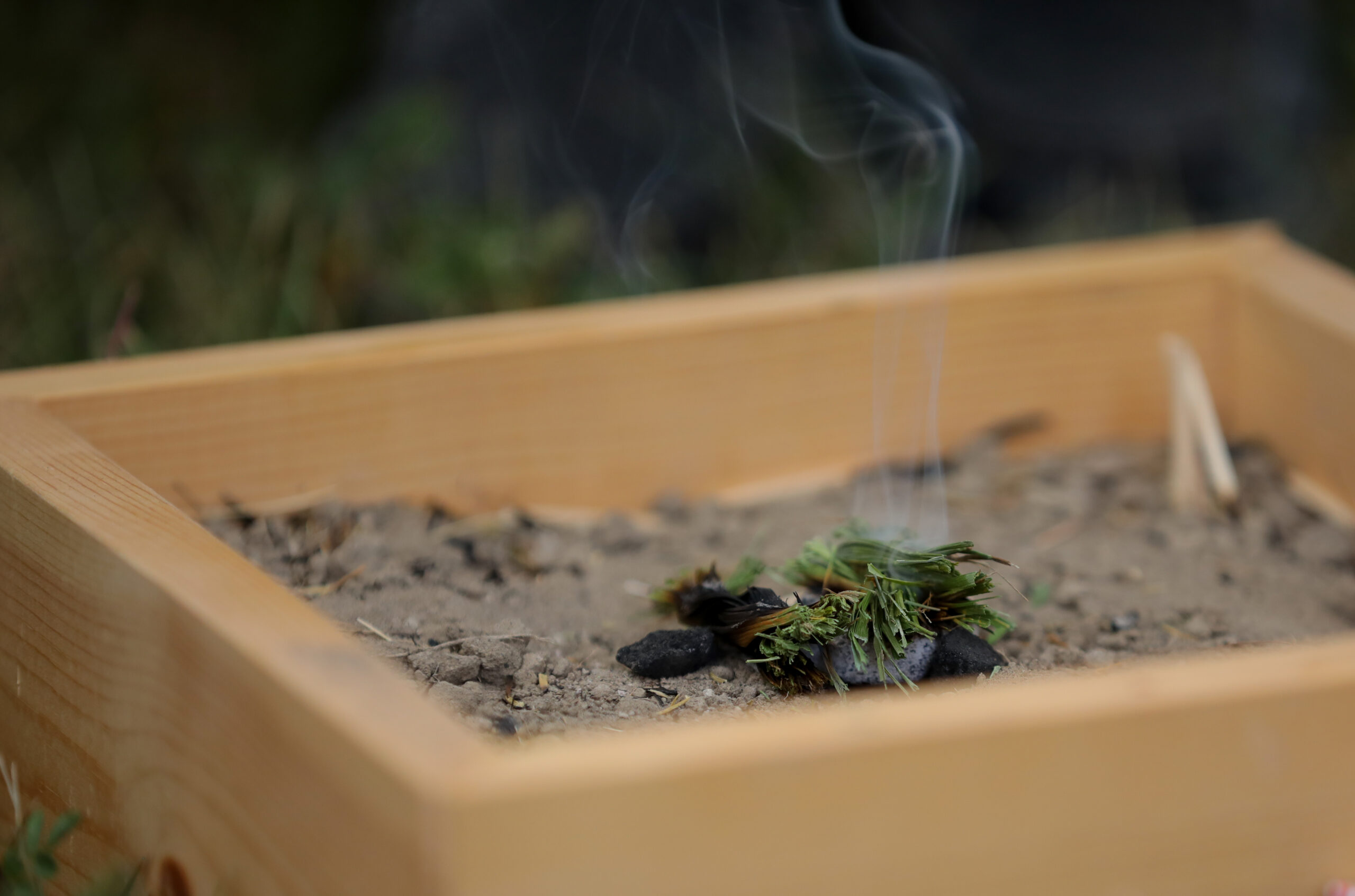
The gentle scent of the sweetgrass fills the teepee in short gasps as the smoke catches and fades. Some smudge themselves with the smoke, others, unsure, sit and breathe its distinctive aroma.
“How we relate to each other is the ceremony of life,” Strikes With A Gun says.
Sweetgrass doesn’t grow by dropping seeds and spawning the next plant. It extends rhizomes underground and pushes up shoots to create new grasses from a mother plant — the adjacent strands connected.
It’s not a food crop, and it won’t lead to food security directly, but it’s a way for the students to understand growth and growing in the context of their own culture. It’s a way of watching those rhizomes spread — literally and figuratively.
“Why would anybody look at these plants? Because they’re not production plants. They’re not something people eat. They’re not something that feeds cattle. So why would anybody look at them?” Lynes says.
“And I actually think this is a brilliant way of decolonizing and reconciling, by looking at these plants that were here before colonizers that may actually have the potential to heal the Earth. Wouldn’t that be something?”
Get the inside scoop on The Narwhal’s environment and climate reporting by signing up for our free newsletter. On a warm September evening nearly 15...
Continue reading
115 billion litres, 70 years to fix, $5.5 billion in lawsuits

Climate change, geopolitics and business opportunities power a blue economy

10 billion litres of sewage are dumped into Winnipeg’s lakes and rivers each year. Some...
